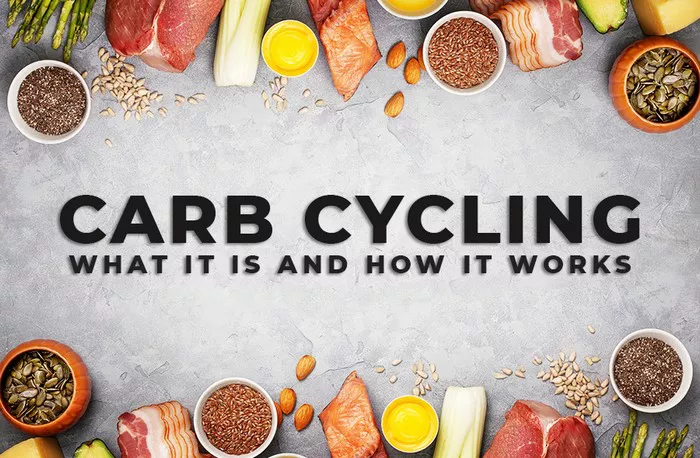Carb cycling is a dietary strategy that involves alternating between periods of higher and lower carbohydrate intake to optimize various aspects of health, fitness, and body composition. This approach has gained popularity among athletes, bodybuilders, and fitness enthusiasts for its potential to enhance weight loss, muscle gain, and performance. In this article, we will explore the fundamentals of carb cycling, how it works, and how you can implement it into your routine.
SEE ALSO: What Is a Sticky Bottle in Cycling
Introduction to Carb Cycling
Definition:
Carb cycling is a dietary method where you vary your carbohydrate intake on different days or periods. Typically, this involves cycling between high-carb days, low-carb days, and sometimes moderate-carb days, depending on your goals and activity level.
Purpose:
The primary purpose of carb cycling is to optimize your body’s use of carbohydrates to achieve specific goals such as weight loss, muscle gain, or performance enhancement. By strategically adjusting carb intake, you can influence how your body uses fuel, manages insulin, and stores glycogen, ultimately leading to better control over body composition.
Mechanism:
Carb cycling affects the body’s hormonal responses, particularly insulin—a hormone that regulates blood sugar levels. On high-carb days, insulin sensitivity improves, aiding in muscle recovery and glycogen storage, which is the body’s stored form of carbohydrates. On low-carb days, the body shifts to burning more fat for energy, which can promote fat loss while preserving muscle mass. This cyclical approach can also prevent the body from adapting to a constant diet, thereby enhancing metabolic flexibility.
How Carb Cycling Works
Carb Cycling Plans:
There are various carb cycling plans, each with its own method of alternating carbohydrate intake:
High-Carb Days: These days are designed to replenish glycogen stores, especially after intense workouts. High-carb days are ideal for promoting muscle growth and recovery.
Low-Carb Days: On low-carb days, carbohydrate intake is reduced to encourage fat burning. These days are usually scheduled on rest days or during periods of lower activity.
Moderate-Carb Days: These days provide a balanced intake of carbohydrates and are often used to maintain energy levels without excessive glycogen storage.
Carb Depletion:
Carb depletion refers to reducing carb intake to deplete glycogen stores, forcing the body to rely on fat for energy. This phase is often used at the beginning of a carb cycling plan to kickstart fat loss.
Macro Calculations:
To implement carb cycling, you need to calculate your macronutrient needs—carbohydrates, proteins, and fats—based on your goals. A common approach is to determine your daily calorie needs and then allocate a certain percentage to carbs, adjusting the percentage according to whether it’s a high-carb, low-carb, or moderate-carb day.
Implementing a Carb Cycling Plan
Meal Planning:
When planning meals for carb cycling, focus on nutrient-dense foods that align with your carb intake for the day. For high-carb days, include whole grains, fruits, and starchy vegetables. On low-carb days, emphasize lean proteins, healthy fats, and non-starchy vegetables.
Sample Meal Plans:
High-Carb Day: Breakfast might include oatmeal with berries, a banana, and a protein shake. Lunch could be a turkey sandwich on whole-grain bread with a side of sweet potatoes. Dinner might consist of grilled chicken, quinoa, and roasted vegetables.
Low-Carb Day: Start with a breakfast of scrambled eggs with spinach and avocado. Lunch could be a salad with grilled salmon, olive oil, and nuts. Dinner might be a steak with sautéed mushrooms and a side of broccoli.
Carb Timing:
Timing your carbohydrate intake is crucial, especially around workouts. On high-carb days, it’s beneficial to consume most of your carbs around your training sessions to maximize energy levels and recovery. On low-carb days, you might limit carb intake to morning meals or post-workout.
Carb Cycling for Specific Goals
Weight Loss:
Carb cycling can be effective for weight loss by alternating between high and low-carb days, which helps maintain muscle mass while promoting fat loss. The low-carb days encourage the body to burn fat for fuel, while high-carb days prevent metabolic slowdown.
Muscle Building:
For those looking to gain muscle, carb cycling ensures that the body has enough fuel for intense workouts and recovery. High-carb days support glycogen replenishment and muscle repair, leading to better gains in muscle mass.
Performance Enhancement:
Athletes and active individuals can benefit from carb cycling by timing high-carb days around training and competitions to optimize energy levels and performance. The increased glycogen stores provide a readily available energy source for endurance and power.
Body Composition:
Carb cycling can help achieve a lean and toned physique by reducing body fat while preserving or even increasing muscle mass. The strategic use of carbohydrates allows for better control over insulin levels and fat storage.
Considerations and Precautions
Individual Needs:
Carb cycling should be tailored to individual goals, activity levels, and preferences. What works for one person might not work for another, so it’s important to adjust the plan based on personal needs.
Health Conditions:
Those with health conditions such as diabetes or insulin resistance should approach carb cycling with caution. It’s essential to monitor blood sugar levels and consult with a healthcare professional before starting a carb cycling plan.
Sustainability:
While carb cycling can be an effective short-term strategy, its long-term sustainability depends on your ability to maintain a balanced and healthy diet. It’s important not to become overly restrictive or obsessive about carb intake.
Conclusion
Carb cycling is a powerful tool for those looking to optimize their diet for weight loss, muscle gain, or performance enhancement. By strategically varying carbohydrate intake, you can influence how your body uses energy, burns fat, and builds muscle. However, it’s crucial to approach carb cycling with careful planning, individualization, and professional guidance to ensure it aligns with your goals and supports your overall health.


